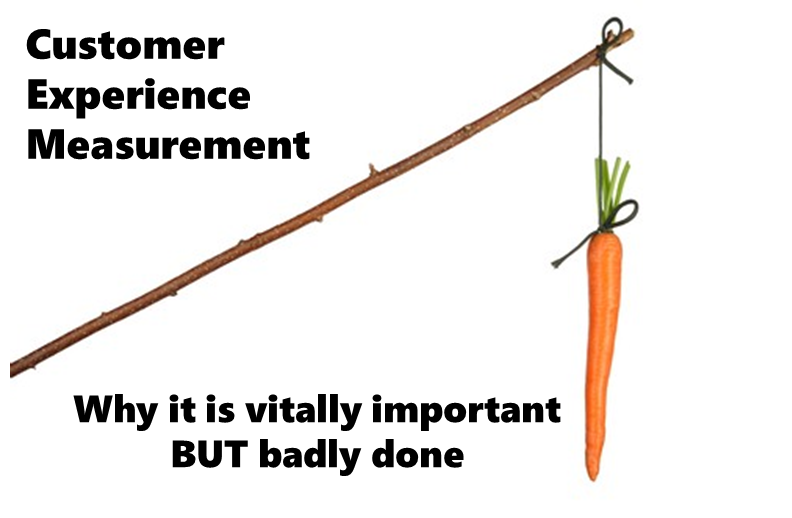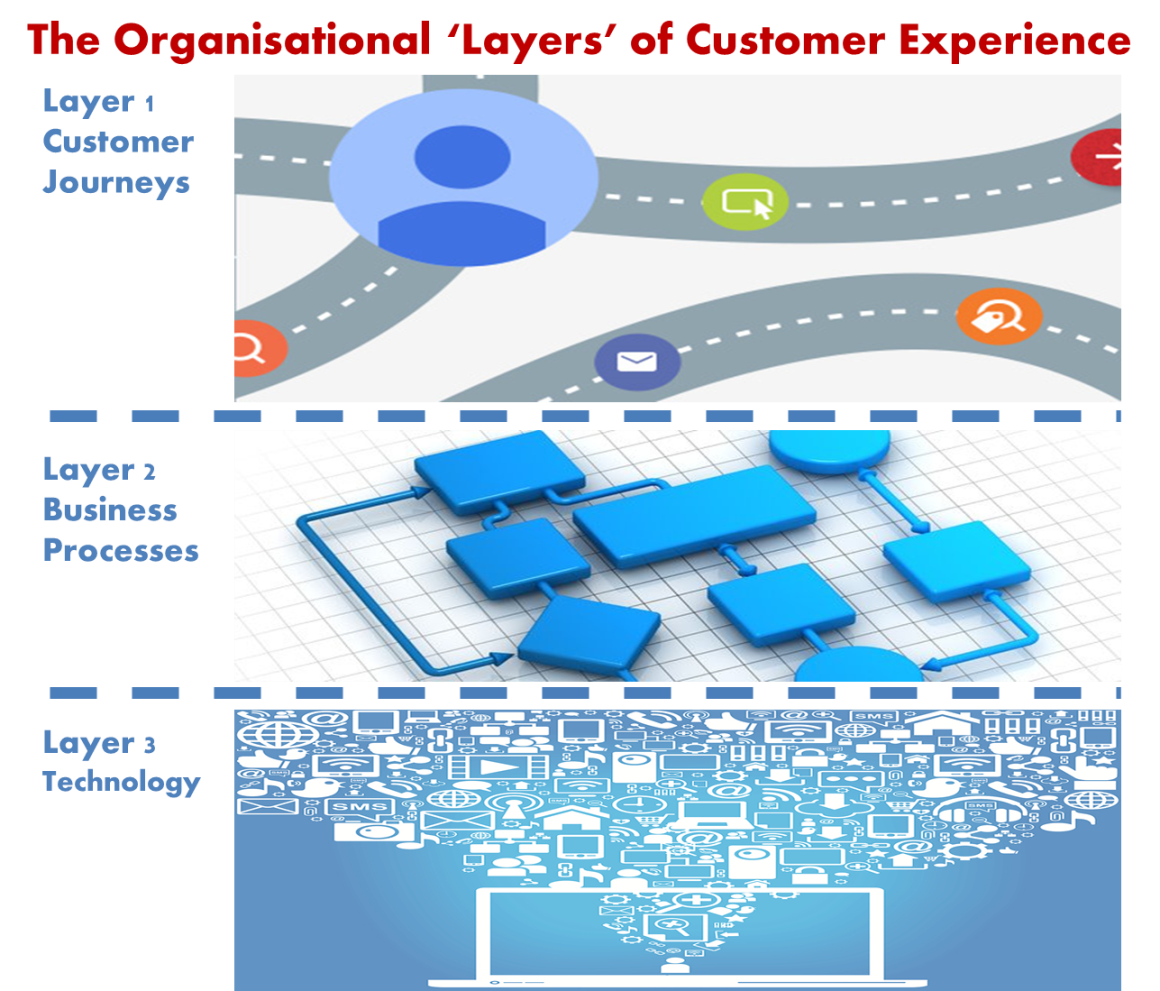
When it comes to the profession that Customer Experience has now become, one of the most important and significant competencies required by all organisations is that of measurement. The ability of a company to robustly and continuously capture a ‘fact based’ understanding of how capable they are of meeting customer needs and expectations is critical if they have a desire to achieve customer focused success.
However…. There is usually one of those, whilst many businesses may be confident that they are indeed ‘measuring’ the Customer Experience, my overwhelming concern is that too many are doing so badly. I recognise that this is a rather bold statement to be making, so allow me to clarify my top 4 reasons why I think this:
1. Failure to measure sufficient ‘voices’!

I believe that the most robust Customer Experience measurement systems should contain a combination of three important ‘voices’- Voice of the Customer (VOC); Voice of the Employee (VOE); and Voice of the Process (VOP). Many organisations are (and have been) measuring VOC for a number of years. Although this is important, VOC in isolation of any other form of measurement may not enable those capturing it to understand the relationship between the things they do (processes that enable the customer journey) and the way they make the customer feel (customer perception). If this is the case, determining exactly WHAT it is that needs to be ‘fixed’ to improve customer perception is challenging (and sometimes impossible).
Over the years, I have interacted with a number of organisations who capture VOC (and VOC alone) yet do not understand what they are supposed to do with it – what prioritised actions should be taken. If these businesses were complementing and correlating their VOC with VP and VOE, they would be in a very different position.
2. Failure to measure the true ‘end to end’ customer journey

The theme of ‘not measuring sufficient voices’ continues in my next assessment of the state of Customer Experience measurement today. Whilst many companies are capturing at least VOC, too often, the VOC they are capturing is NOT representative of the ‘end to end’ customer journey – and sometimes of all types of customer. If you are only asking customers about a part or parts or the customer journey, the feedback being received will only be representative of the parts you are asking them about – it is not rocket science.
Despite this, I have observed too many scenarios where the measurement system is not representative and as a result, an organisation in this position is likely to do one thing – JUMP TO THE WRONG CONCLUSION! It is so important to get to the TRUTH with Customer Experience measurement – nothing else matters than having a clear understanding of the things that need to be addressed to have the greatest effect on improving customer perception and as a result, commercial goals. One thing I can say with certainty – if your customer metric looks too good to be true – it probably is!
3. Failure to align business process to the customer journey

The most robust Customer Experience measurement systems are structured by correlating business processes with the customer journey. If we think of all organisations as a combination of ‘layers’, whilst the top layer is the customer journey, the middle layer is made up of business processes. It is a business’s processes that enable the customer journey to happen. The third layer comprises the technology that enables business processes to deliver the customer journey…. Are you still with me?!
For a business to be ‘focused’ on knowing WHAT to address to improve the customer journey – in other words, to be able to narrow down to a small number of priorities – it must be able to measure ‘CAUSE and EFFECT’. If you measure how capable business processes are at doing what they need to do (the CAUSE), as they improve, you should see an improvement in the way customers feel about what you do (the EFFECT). This principle only works on two conditions – a) you measure all business processes that enable the delivery of the customer journey; and b) your business processes are ALIGNED to the customer journey.
In my experience, so many companies designed and implemented business process (and technology for that matter) without even knowing that the customer journey existed, too often, business processes do NOT align to the customer journey. As a result, it is difficult (and sometimes impossible) to correlate a change in the performance of processes with customer feedback. Getting this right – enabling the relationship between process and customer journey is perhaps the most powerful way of understanding how to improve the customer experience (based on fact).
4. Failure to take ACTION

Failing to take ACTION on Customer Experience measurement is a BIG mistake to make. It is more common to see this being the case than you may imagine. All over the world, business leaders seem unsure as to whether or not they should be using measurement as the carrot or the stick! In reality, neither of these analogies is appropriate (in my opinion).
When it comes to Customer Experience Measurement, the number – an NPS score for example (which some may see as either the carrot or the stick) – is not the sole reason for measuring. Regularly I come across leaders who are focussed on the score and the score alone – almost obsessively. I do believe that a score is important – to link to business strategy and to act as a ‘talisman’ for everyone to follow, BUT unless you know what to do with the measurement being captured, it is POINTLESS.
There are more examples I could add of what I consider to be ‘bad’ examples of Customer Experience measurement – but rather than me rambling on, I would love for you to add your reasons by commenting on this article. As a profession, it is the responsibility of Customer Experience Professionals all over the world to educate businesses how to measure the Customer Experience well – I hope you will take some time to add your expertise for others to learn from!




Agree with all of these measurement shortfalls. Would add that most CX metrics are farily vague, and not actionable at the granular level, nor do they address the impact of experience-related emotions and memory on behavior. In addition, as referenced in my KPI blog (cited at the conclusion of your post), most fail to take the influence of employees on CX perception.,
From my experience, insufficient questioning of “Why?” in many aspects of the customer engagement experience is why these highlighted failings occur. When we behave a bit like children responding to every statement, judgement, conclusion with a request to understand reason, we undoubtedly uncover a shortcoming in our consideration of voice, journey, process, interfaces, support and more. #KnowWhy #MotiveMatters #Sumotive